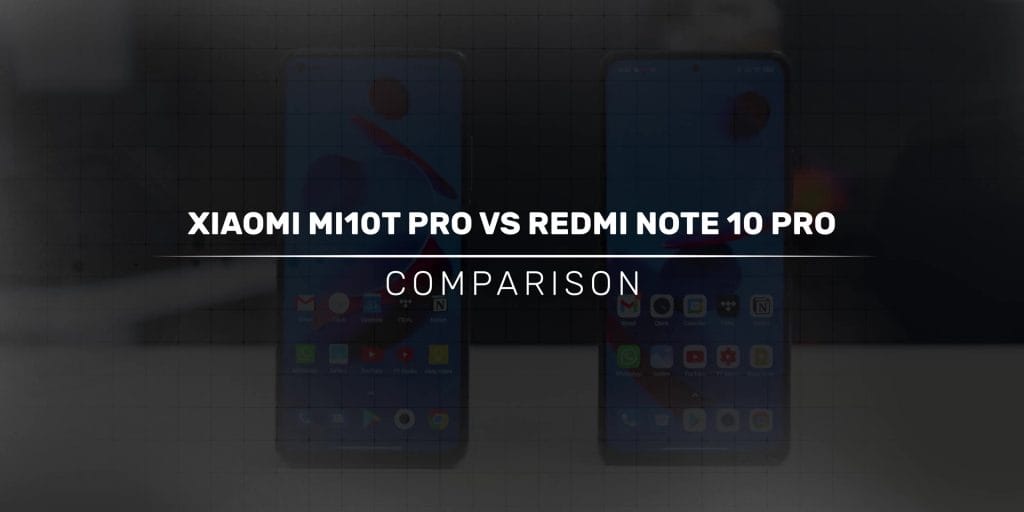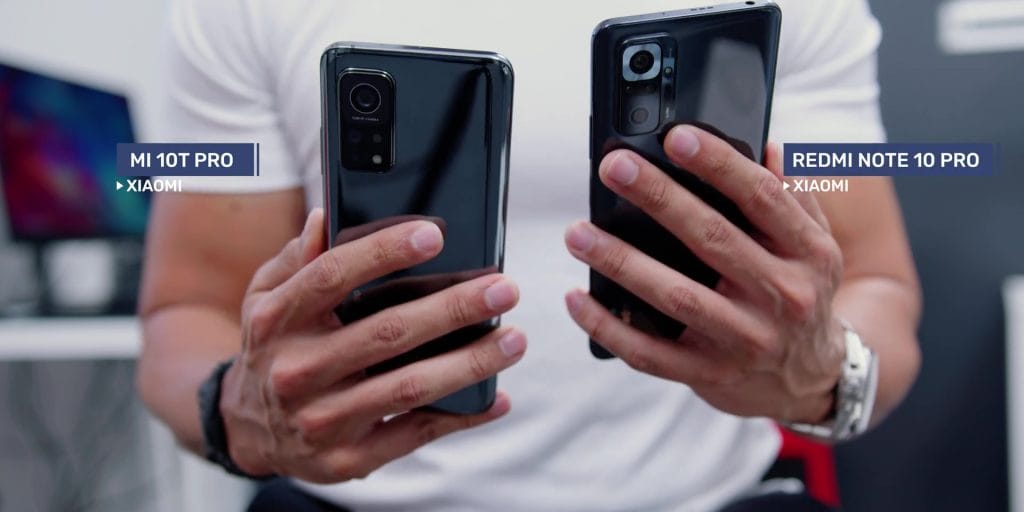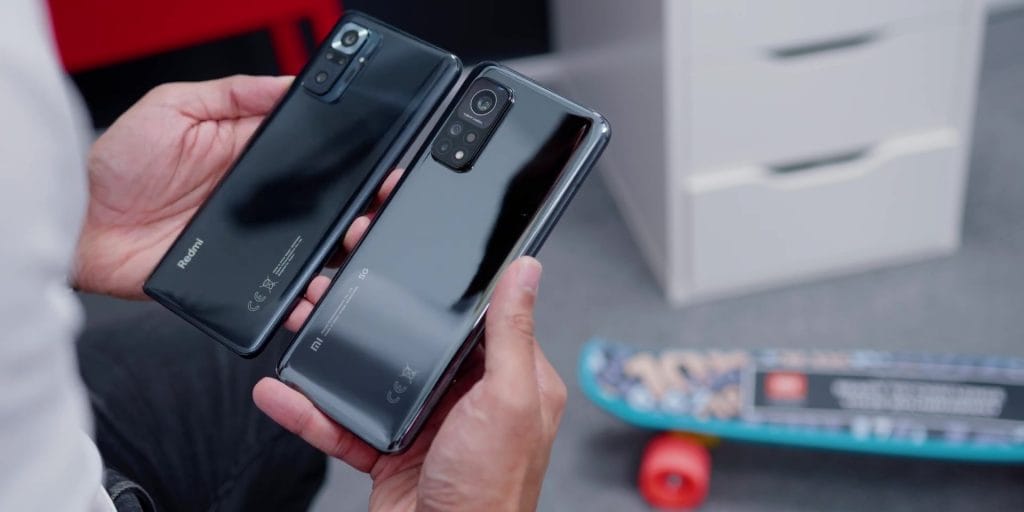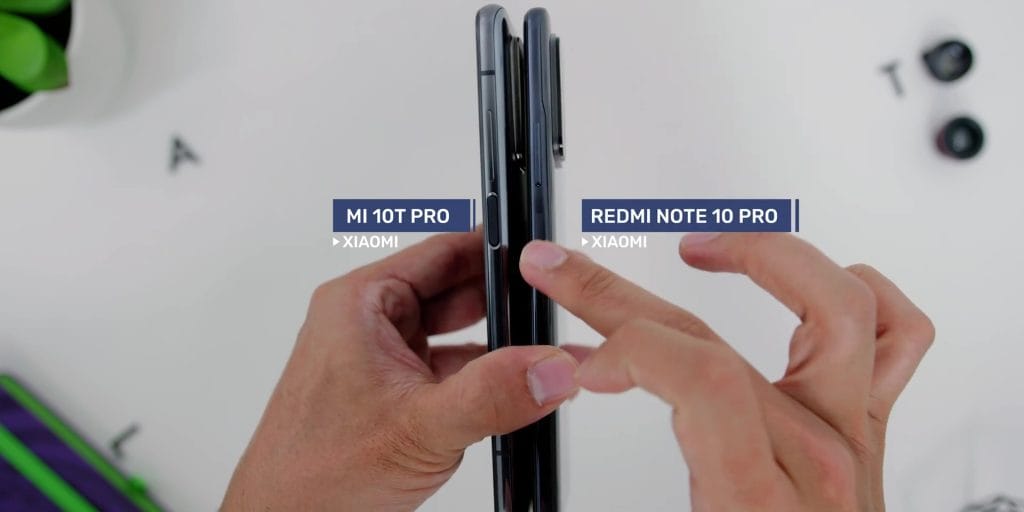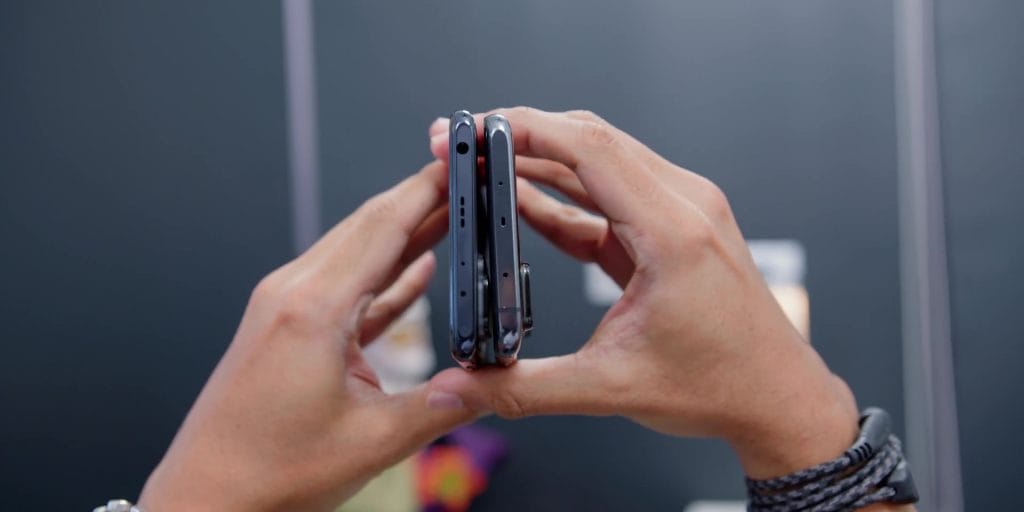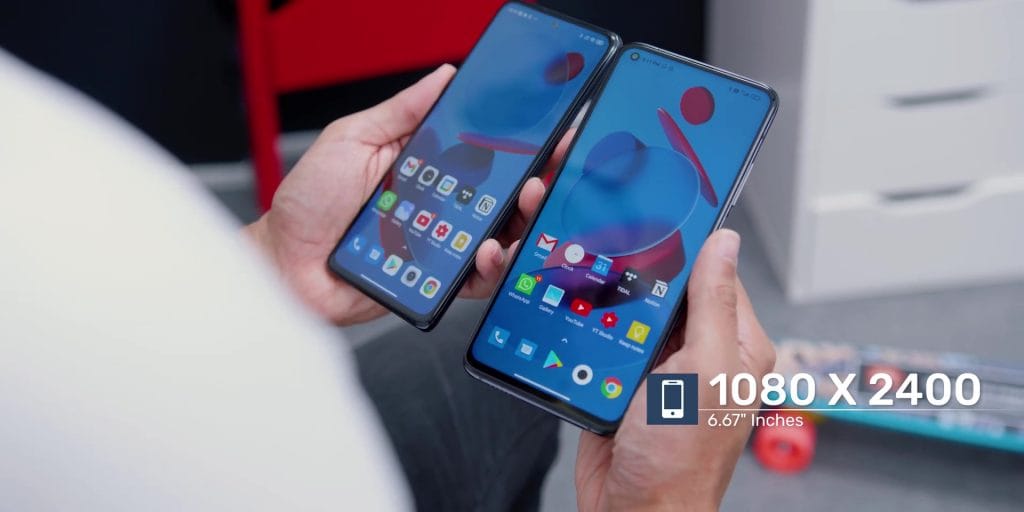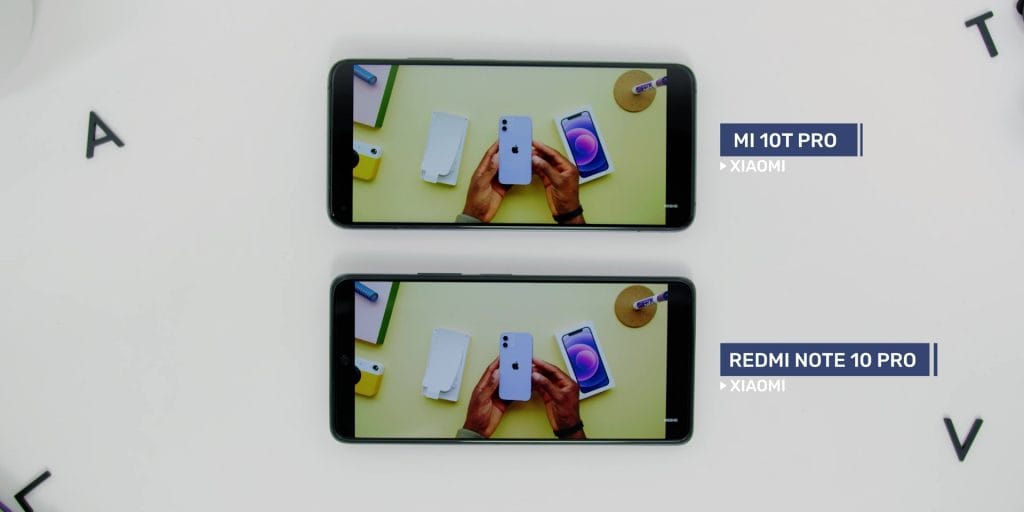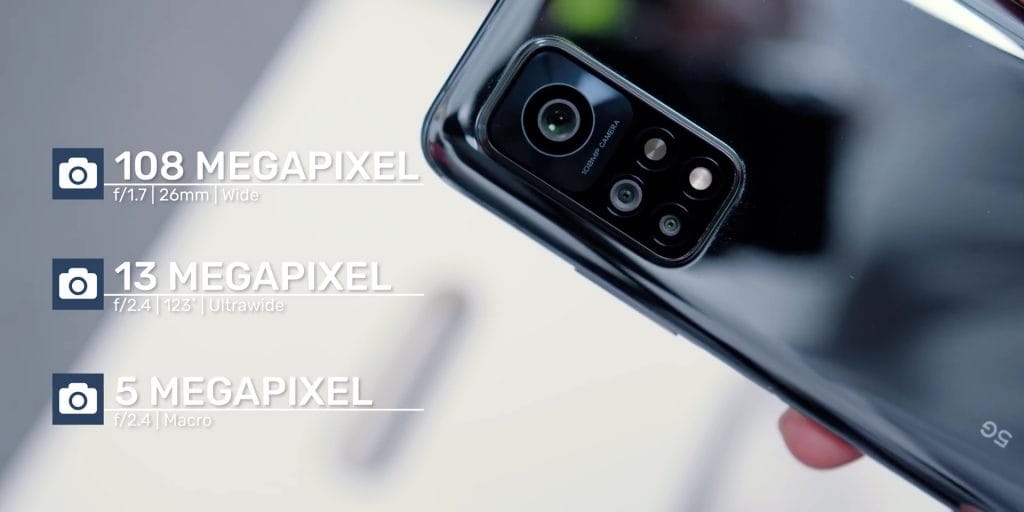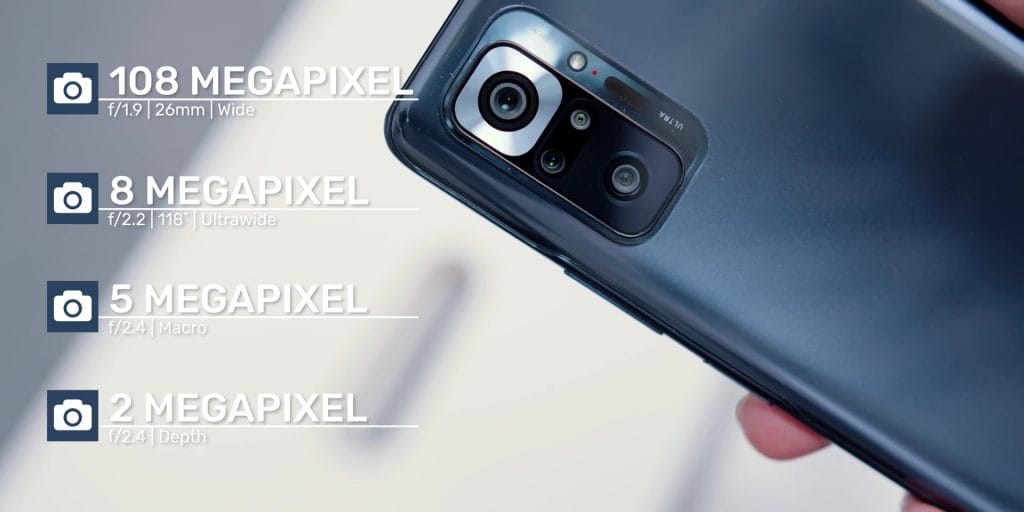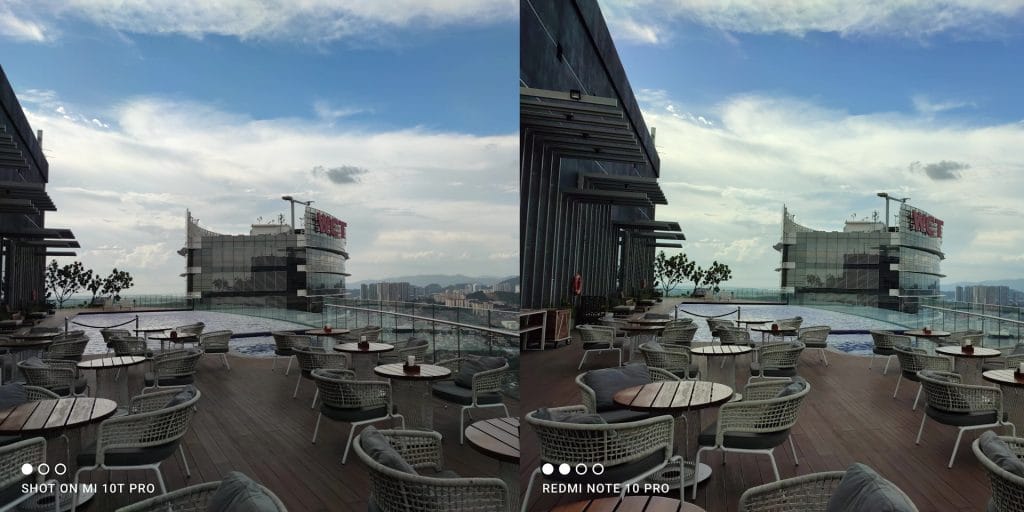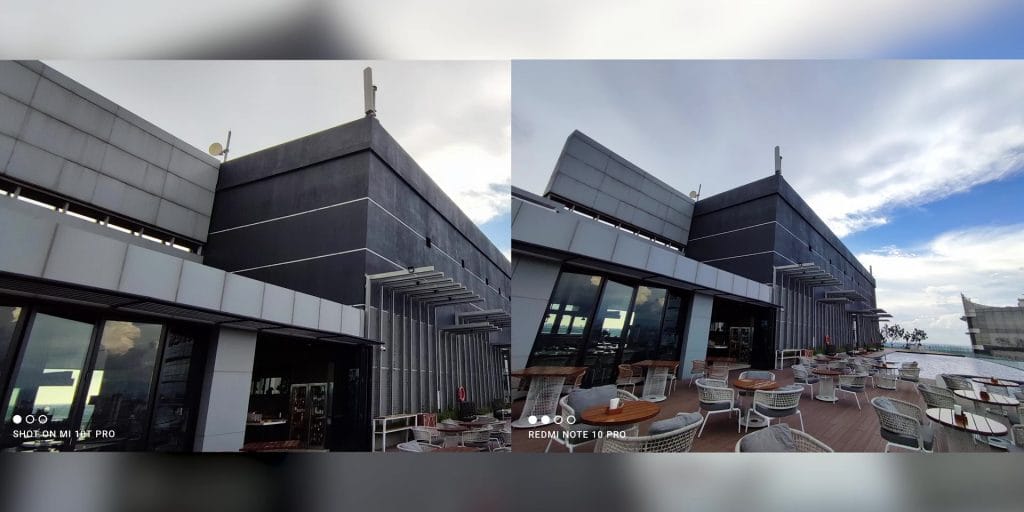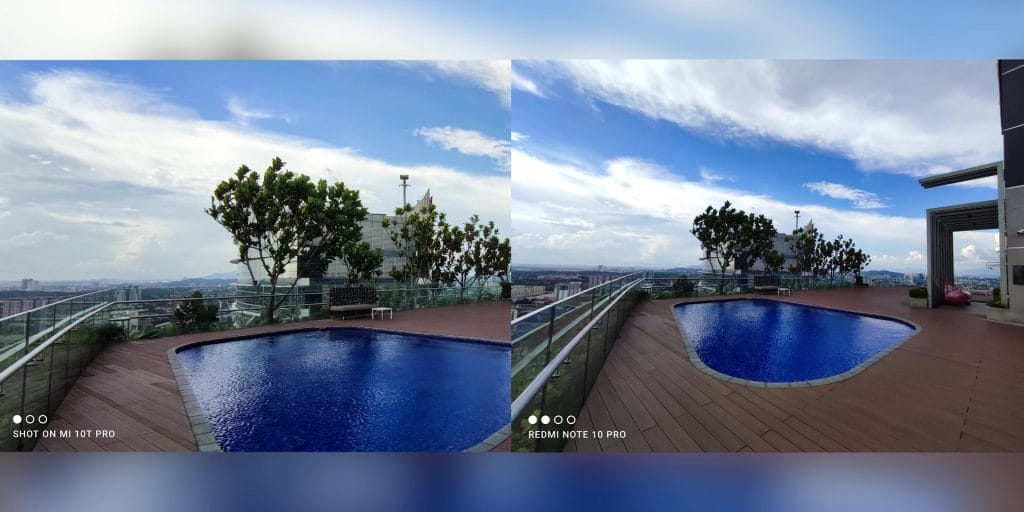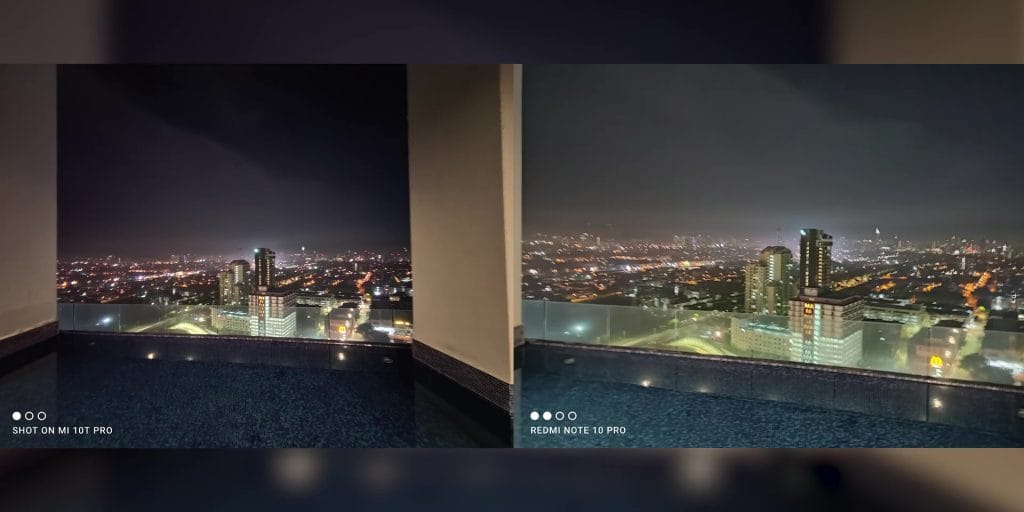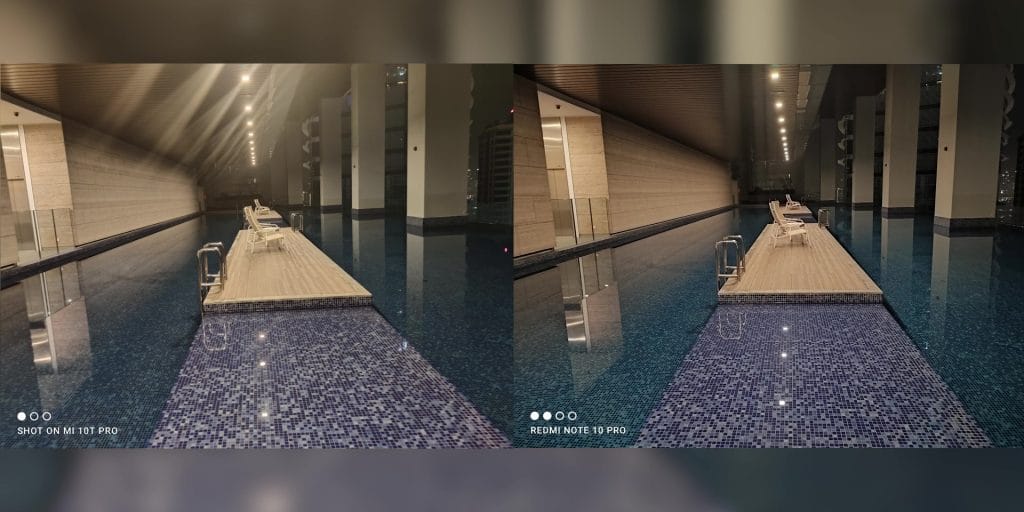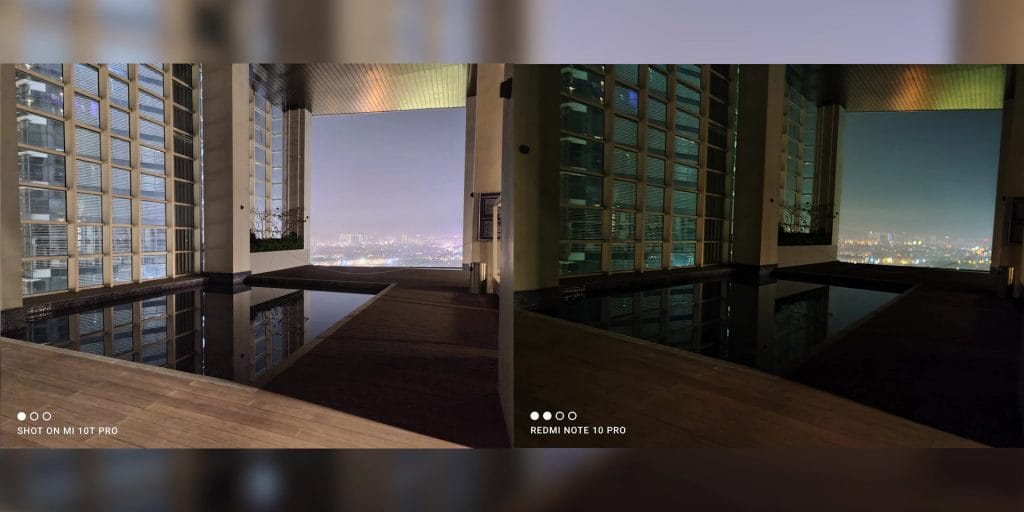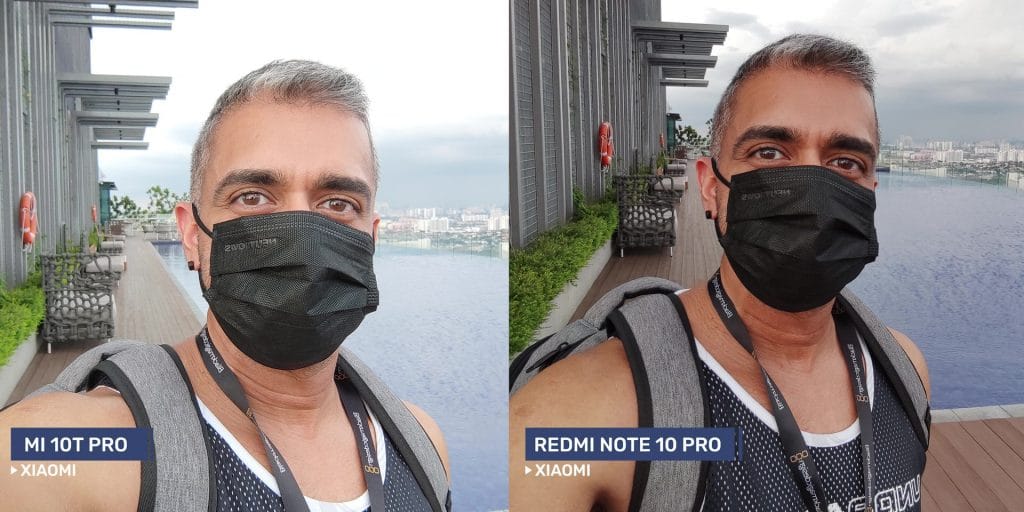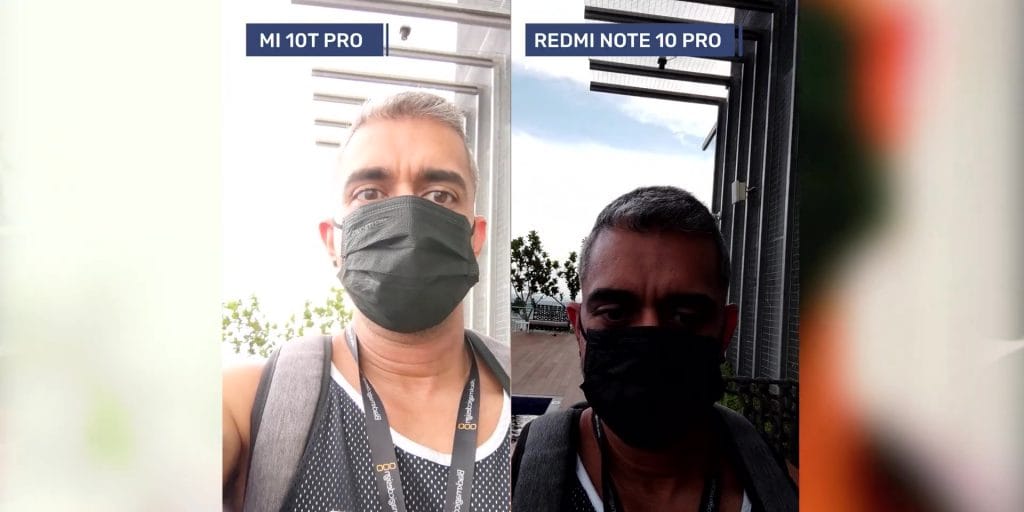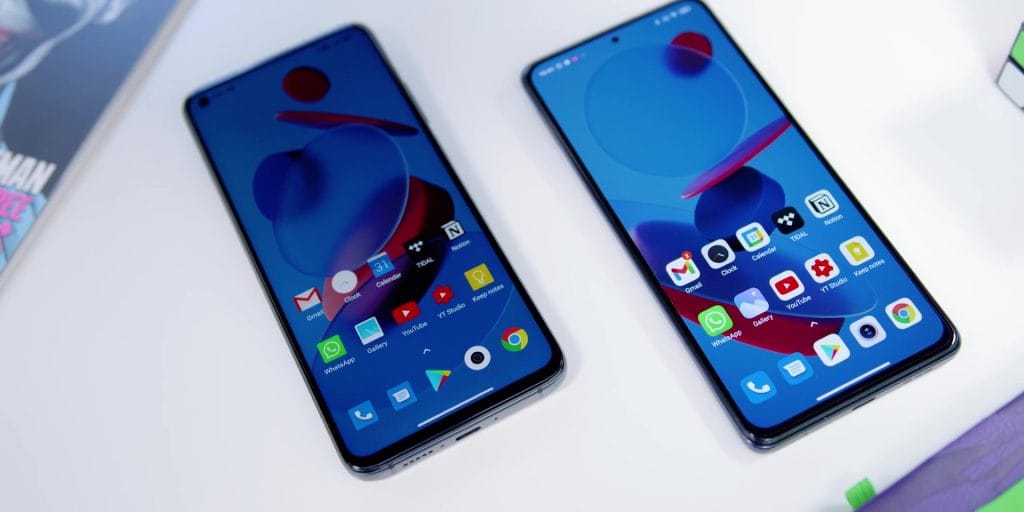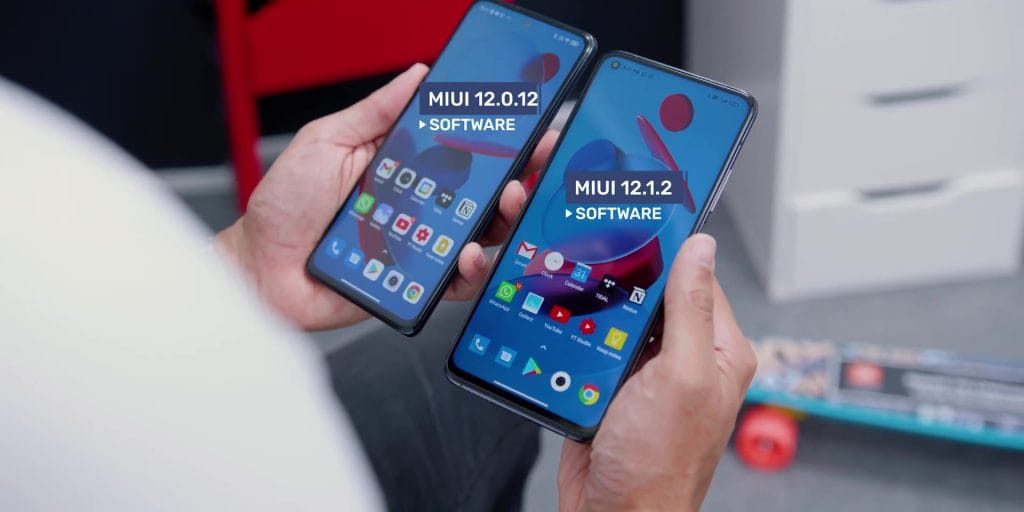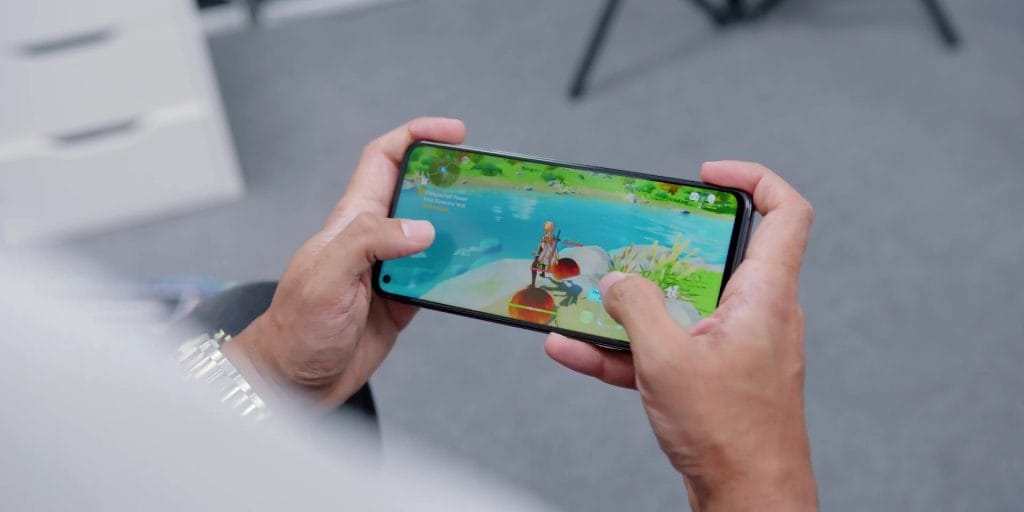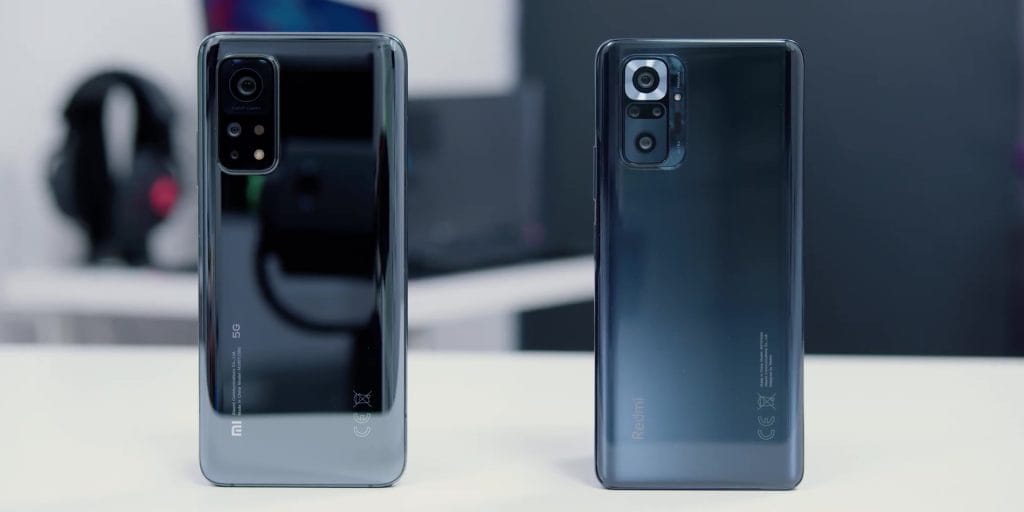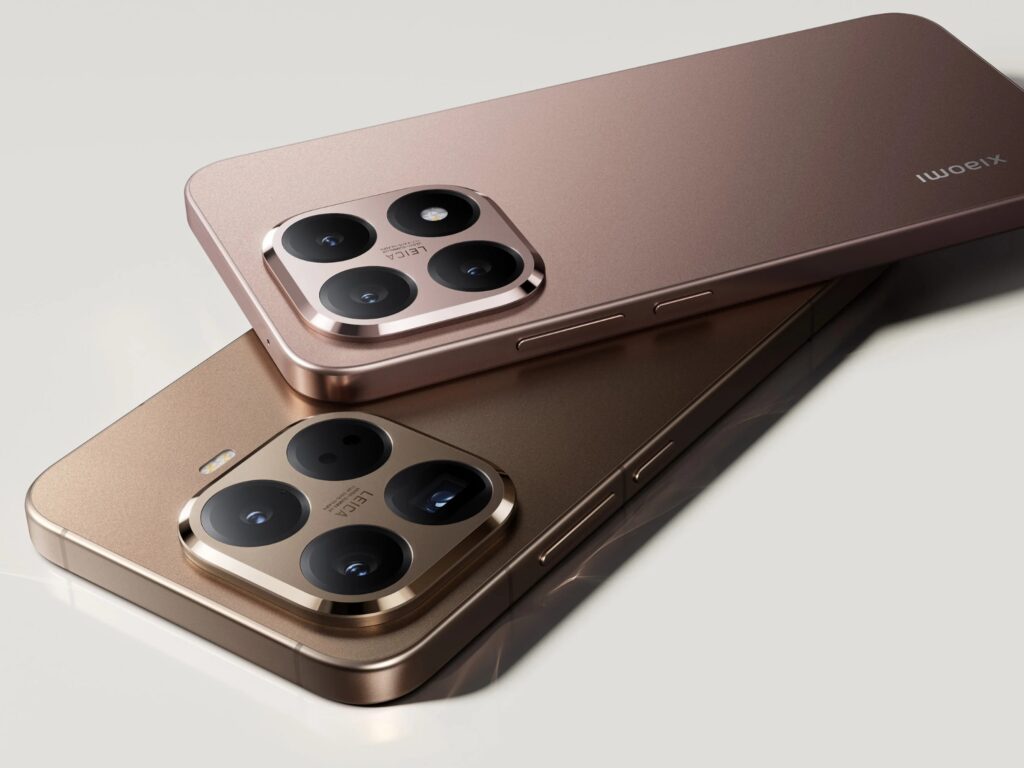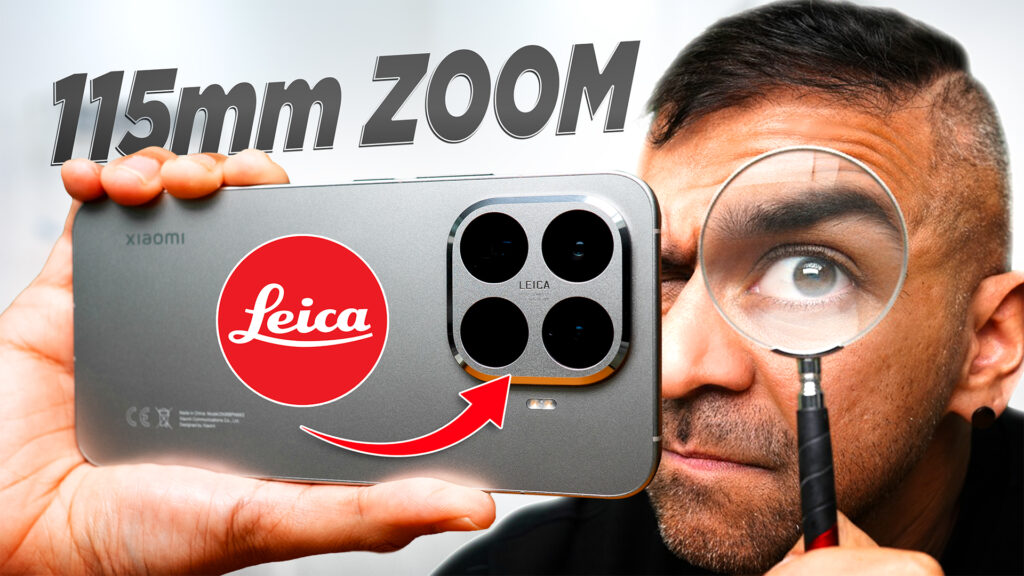So the Redmi Note 10 Pro has an official price of RM1,099 for the 8-gigabyte ram with 128 gigabytes of storage and the Xiaomi Mi 10T Pro is priced at RM1,999.
So if you ever questioned whether that extra RM900 is worth getting the Xiaomi Mi 10T Pro, well, we shall find it out right now!
Hey guys Adam Lobo here from Adam Lobo TV and in this article, I will compare:
- the hardware,
- the displays,
- the cameras,
- audio,
- battery,
- software,
- gaming
and give you the conclusion on which phone is better or worth the money.
Hardware
Starting from the phone’s hardware. From a design and build, the Mi 10T was just a tad bit heavier than the Redmi Note 10 Pro.
And while the dimensions of the phone are about the same, when it comes to which feels better in the hands I have to give it to the Redmi Note 10 Pro as the phone did feel nicer to hold even when the phone is tilted in any sort of angle.
Then both phones have the same Corning Gorilla Glass 5 protection for the front and the back where the Redmi had a plastic frame where the Mi 10T had an aluminum frame.
At the back, you will find similar-sized camera bumps which makes both phones quite difficult to type if it’s placed on a surface, other than that it didn’t really bother me at all.
In terms of the buttons and ports, on the right side, it is the same with the volume rockers, the side-mounted fingerprint and power button but what’s different is that the Mi 10T Pro had a concave button for that, where the Redmi Note 10 Pro had the new generation power fingerprint button which looks and feels like a power button, where if I had to choose between both I’d go with the button style of the Redmi Note 10 Pro.
And also worth mentioning is the fact that while both have an IR Blaster as usual but there is a headphones jack on the Redmi Note 10 Pro.
Then in terms of IP rating, both phones do not have an IP rating but it could survive some splashes and some light rain but yes, I wouldn’t advise going beyond that.
Display
As for the phone’s display, both come with a similar-sized 6.67 inches and the same resolution of 1080 by 2400 pixels, where the Mi 10T Pro comes with an IPS LCD Display and the Redmi Note 10 Pro comes with an AMOLED display.
[easy-image-collage id=2234]
And as much as we would think that an AMOLED panel will make the IPS panel look like crap but… call me crazy… because not only that the Mi 10T Pro seems to have a brighter screen when at maximum compared to the Redmi Note 10 Pro, apparently it had a higher peak brightness compared to the Mi 10T Pro.
But I also found that the screen actually looks nicer not only for browsing but also when watching videos. Yes, there are better shadows for the Redmi’s AMOLED but from just a nice looking bright and vibrant picture, for some strange reason I kind of liked the Mi 10T Pro better but probably this could be a personal preference.
And yes, in terms of notches, although I am not a fan of camera notches but if I had to choose between the both, I’d go with the side hole punch of the MI 10T Pro.
While the Mi 10T has a slightly higher refresh rate at 144 hertz compared to 120 hertz on the Redmi Note 10 Pro, in real-time, you would not see a significant difference, to be honest.
And then finally there is an Always-on Display option for the Redmi Note 10 Pro since it has an AMOLED Screen.
Camera
Now before comparing the image and video quality for both phones, let’s first check out the specs.
The Mi 10 T comes with:
- a 108-Megapixel f 1.7 26mm wide lens,
- a 13-Megapixel f 2.4, and
- a 5-Megapixel f 2.4 macro lenses for the rear cameras
Then the Redmi Note 10 Pro:
- a 108-Megapixel lens, a higher aperture value of f 1.9 with the same 26mm focal length
- a lower 8-Megapixel f 2.2 aperture, a wider 118 degrees Field of View compared to 123 degrees on the Mi 10 T Pro
- the same 5-Megapixel f 2.4 macro lens
- plus an additional 2-megapixel f 2.4 depth sensor
108-Megapixel Mode
First checking out the 108 megapixel modes, the amount of details for both phones were similar, where the Redmi Note 10 Pro has just a slightly warmer tone and the Mi 10T Pro had a cooler tone.
Sometimes if you pixel peep there is indeed a bit more details on the Mi 10T Pro, but who is actually going to do this in real life? So overall you really couldn’t tell them apart unless you really put both phones and analyse side by side.
Main Lens
Pictures for the main lens did look very similar but there surely is a high AI that comes into play especially on the overall saturation for the Redmi Note 10 Pro and the shadow detail was better on the Mi 10T Pro.
Ultrawide Lens
Then looking at the Ultrawide shots, the Redmi Note 10 Pro had a better field of view but the colours looked more natural and not overly saturated on the Mi 10T Pro and the shadows on the Mi 10T Pro was once again better, as seen at the tree leaves. But I do appreciate the better field of view on the Redmi Note 10 Pro
Portrait Mode
As for the portrait mode, what’s different is that now, there seem to have more details on the subject to background blur on the Redmi Note 10 Pro, as seen on the mask over here. But where the Mi 10T Pro does a better job on the edge detection, as seen at the top of my hair.
However when it comes to a backlit situation, here is where the Redmi Note 10 Pro totally floors the Mi 10T Pro with way better image quality and better dynamic range as well.
Macro Mode
Then as for the Macro Mode, if you all really do care about this mode, you will find that the Redmi Note 10 Pro has better detail and the focusing is also way better in it compared to the Mi 10T Pro where you will really need to have a super steady hand in order to get the best performing short.
Night Mode
Next, looking at the night mode shots the Redmi Note 10 Pro can only use the main lens for this mode where the Mi 10T Pro can use the Ultrawide lens and also the two times digital zoom.
So when comparing the main lenses since the main lens for the Mi 10T Pro has better stabilization, so it was easier to nail focus. But when it comes to just comparing both pictures while it has the same low noise ratio but where the Redmi is better is on where the lights were on the ceiling, where there wasn’t any glare compared to the Mi 10T Pro.
And where the Mi 10T Pro really shines is during situations where there was really low light with way better shadows, highlights and especially when it comes to the details on the background area.
Front Camera
As for the front camera, the Mi 10T Pro has a 20-megapixel f 2.2 lens and the Redmi Note 10 Pro has a lower 16-megapixel f 2.5 aperture lens.
[easy-image-collage id=2236]
So when it comes to the selfie photos, on the regular selfie mode the shots on the Redmi Note 10 Pro looked way better with just the right amount of exposure compared to the Mi 10T Pro which was quite interesting as the Redmi had a lower megapixel count.
And when it comes to the portrait selfie, the background is overexposed for the Mi 10T Pro and the edge detection on the Redmi Note 10 Pro isn’t as good again.
Video
As for video, the Mi 10T Pro can record up to 8k 30 fps compared to the Redmi Note 10 Pro at 4k 30 fps.
So when comparing the 4k video footage, the Ultrawide video shots were identical when it comes to the quality of the video with great image stabilization.
But when it comes to the main lens, the image stabilization on the Redmi Note 10 Pro just fell apart and in my opinion, totally unusable.
(refer to the video below)
Then finally on the selfie video, both phones can only shoot up to 1080p at 30 fps, a typical story of latest Xiaomi phones until now.
And like the picture mode, the video was overexposed most of the time for the Mi 10T Pro and the video on the Redmi Note 10 Pro looked better and both phones had great image stabilization.
Audio
In terms of both of the phone’s speakers, both have stereos speakers, which was nice. In terms of the quality of sound, it was exactly the same with nice vocals and decent bass and mids.
But in terms of the output, the Redmi Note 10 Pro has a slightly lower output at 94 dB and the Mi 10T Pro has an output of 95.3 dB.
[easy-image-collage id=2238]
Battery
As for the phone’s battery, here is where again there is only a tad bit difference between the both, where the Mi 10 T comes with 5000 milliamps and the Redmi Note 10 Pro comes with just 20 milliamps more.
[easy-image-collage id=2239]
And when it comes to screen on time, with dark mode turned on at the highest refresh rate and at the current latest software updates for each phone, on the Redmi Note 10 Pro I got an average of 4 hours and 53 minutes of screen on time at 10% battery, which was just OOOOKKK because the Mi 10T Pro had a way better battery life with an average of of screen 5 hours and 28 minutes of time when I was at 9% battery.
So yes size DOES NOT matter and overall I have to say that I love how the Mi 10T Pro takes a longer time to drain the battery compared to the Redmi Note 10 Pro that seems to drain way much faster.
Both phones have fast-charging up to 33-watts, where the chargers come inside of the box and both phones do not support wireless charging.
Software
As for software and the overall experience, as of the making this video, the Mi 10 Pro’s latest update is the MiUI version 12.1.2 and the Redmi Note 10 Pro has MiUI version 12.0.12, where both stock icons looked different but of course you can change it accordingly.
In terms of daily usage, there weren’t any issues, except I still found that the dark mode integration with certain apps is still not the best, which is slowly getting better.
But I have to say that I love the Mi 10T Pro has the option to go to the Control center separate if you swipe towards the right top of the screen and a separate notification shade if you swipe towards the left, so that made the phone perform daily tasks better.
[easy-image-collage id=2240]
As mentioned that the refresh rate difference wasn’t obvious at all so yes, other than that all is well!
Gaming
As for gaming, I tested Genshin Impact on both phones and while everything ran great and smooth on the Mi 10T Pro, it was slightly laggy at times on the Redmi Note 10 Pro. And yes, both phones do get pretty hot during a very long gameplay, so keep that in mind.
Conclusion
All right guys, so there is everything that you need to know about both the Xiaomi Mi 10T Pro and the Redmi Note 10 Pro, as you have seen there are some pros and cons for each.
And while the Mi 10T Pro cost RM900 more, I personally feel that the diminishing returns that you get by spending that extra RM900 would be better but if selfie photos matter to you that much, you might want to reconsider that. I’d take a better battery life and a surprisingly nicer looking screen on the Mi 10T Pro any day.
BUT I would like to know which one would you guys choose? Do you all agree with me? Do let me know in the comment section below. Hope this review helped you to make a purchase decision!

